“The clearest way to the Universe is through the forest wilderness.“
– John Muir (also known as “John of the Mountains” and “Father of the National Parks”)
Till about a few years ago, I could only dream of seeing a Mountain Gorilla in the wild. I was contend watching documentaries on the Nat Geo or Animal Planet and be inspired by the likes of Sir David Attenborough. However, I have been lucky to have landed in the lands of mountain gorillas – East Africa and Uganda to be precise.
Uganda boasts of hosting (protecting) about 50% of the worlds surviving mountain gorillas. There are multiple areas where tourists can visit these primates in their natural habitat. One of the first questions which comes to mind – is it not dangerous? Well, there is an elaborate system of ensuring the safety of these animals in the wild as well as that of the tourists. Without going into too many details, these gorillas, while still in the wild, have been habituated to human presence. Since they inhabit dense rainforests, it is an exhilarating experience overall.
The mountain gorilla (Gorilla beringei beringei) is one of the two subspecies of the eastern gorilla (Gorilla beringei). The total population is estimated to be about 1000. A major portion of the population lives in Uganda’s Bwindi Impenetrable National Park, and the balance live in the Virunga Forests which spread in three adjacent national parks (across three countries) i.e., Uganda’s Mgahinga Gorilla National Park, Rwanda’s Volcanoes National Park, and Virunga National Park in the Democratic Republic of Congo.
I decided to visit the Bwindi Impenetrable Forest, in the SW Uganda, which is about 425 km (by road) from Entebbe. Below are some snapshot of my meeting with the Gorillas.
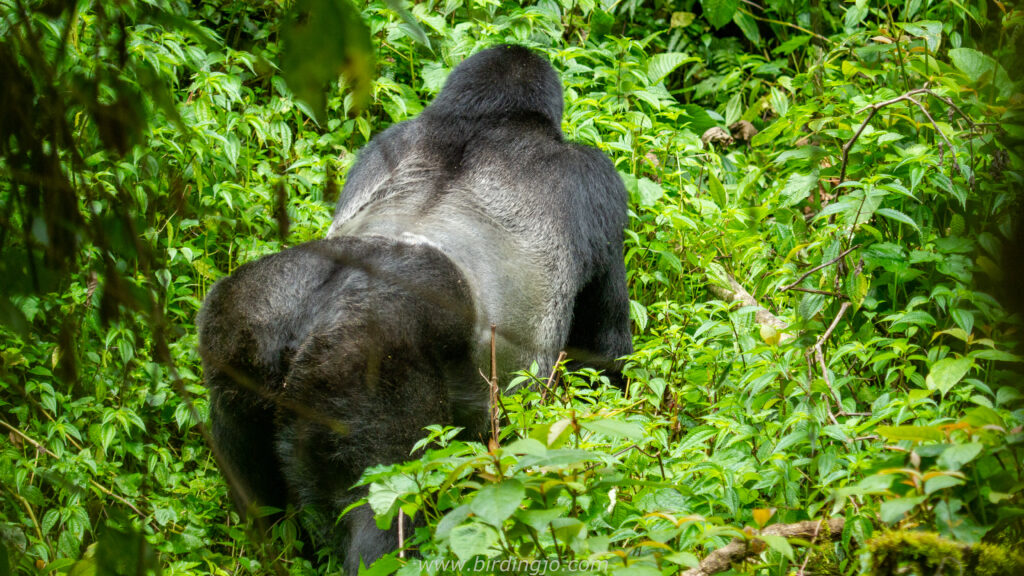
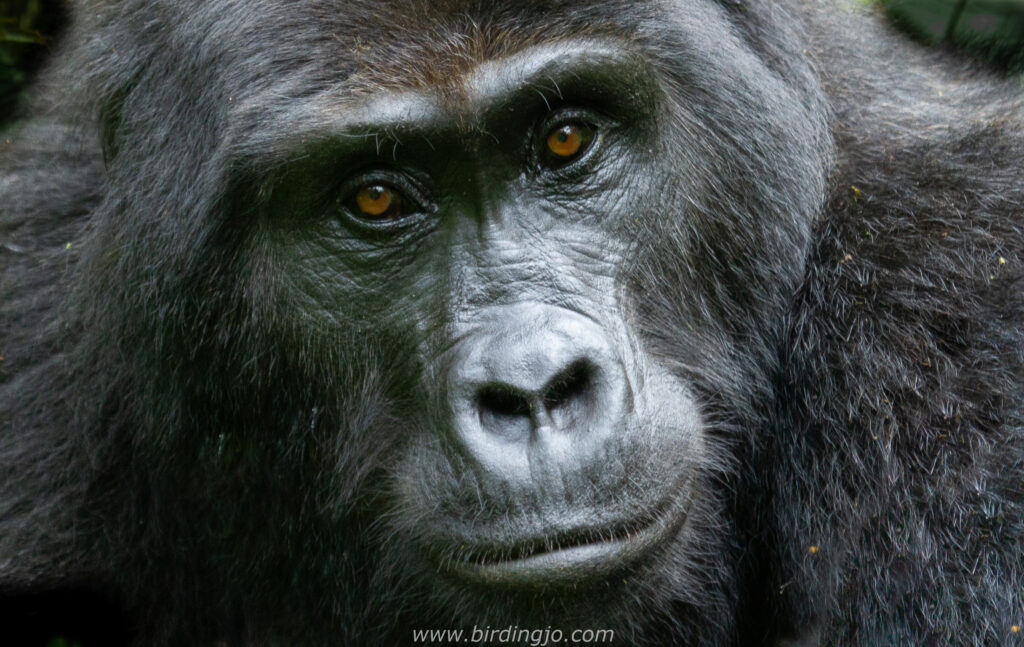
In Uganda, there are about 18 family groups of Gorillas which have been habituated – a two years process, in which Gorillas are gradually exposed to human presence in their environment. As such, gorillas are gentle by nature. Once the families are habituated, no more than 8 tourists are allowed to visit them for more than an hour.
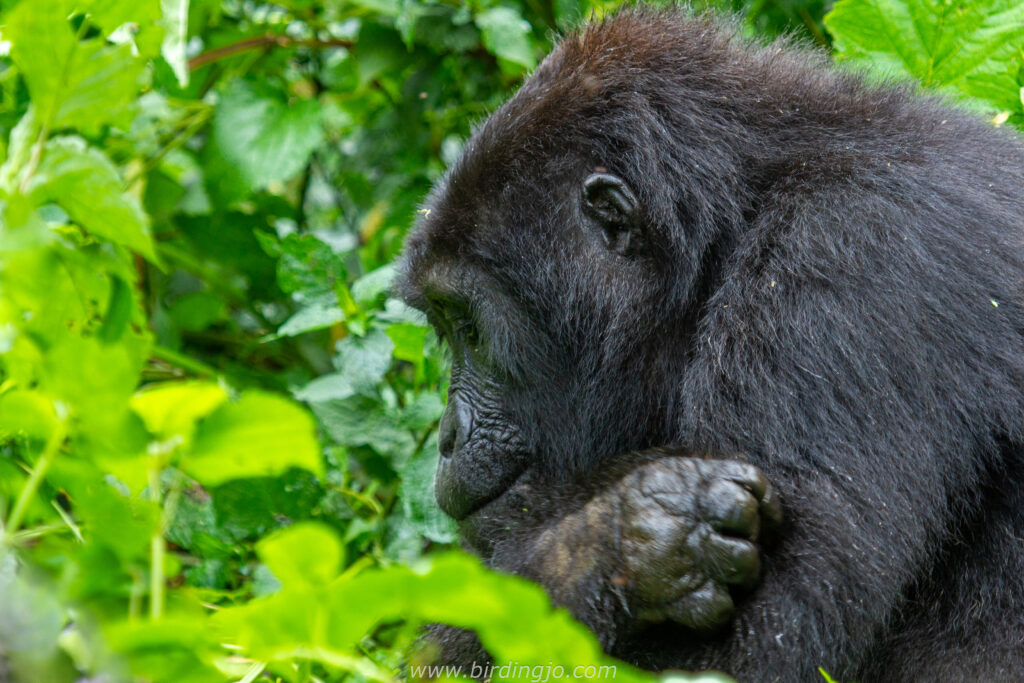
The group of tourists is led and accompanied by armed rangers. You follow the elephant trails through the thick rainforest (it would be good to recall the name – Impenetrable Forest). The elephant trails are full of mud, slush and slippery stones / thick branches, where slipping and falling a couple of time is all part of the game. Mosquitoes, flies and stinging nettles are some other privileges you are bestowed upon when you enter the rainforest. Note, none of the above require guns to be protected from. In my understanding, the rangers carry guns to protect the gorillas and tourists from the most dangerous animal on the planet – Humans (poachers / rebels / kidnappers). Luckily, Uganda has had the least of rebels / kidnapper actions, compared to Congo and Rwanda.
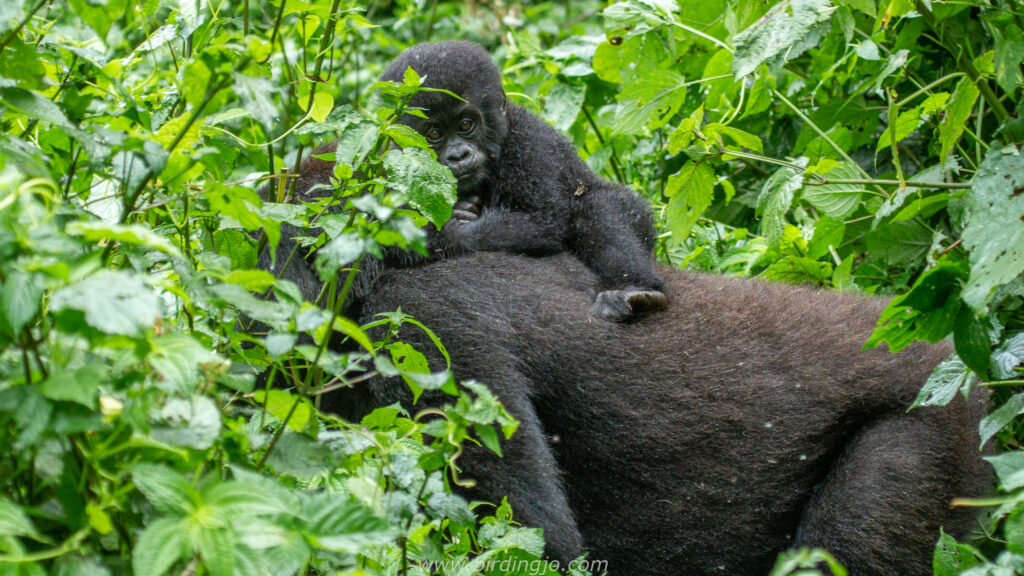
One needs to obtain a permit from the Ugandan Wildlife Authority. All tour operators can help, but be careful of scams. Sometimes, high cost of an experience also adds to the exclusivity and forced sense of “we did it” – just to give you an idea, the pre-Covid cost was USD700/- per person, now discounted till June 2021.
In 1981, environmentalists had estimated that only 254 mountain gorillas were left in the world, but the population has risen steadily, thanks to intensive international conservation efforts. As these critically endangered creatures can’t survive in captivity, the only way to see them is by trekking up to their natural habitat, at times in the misty, cloud covered forests.
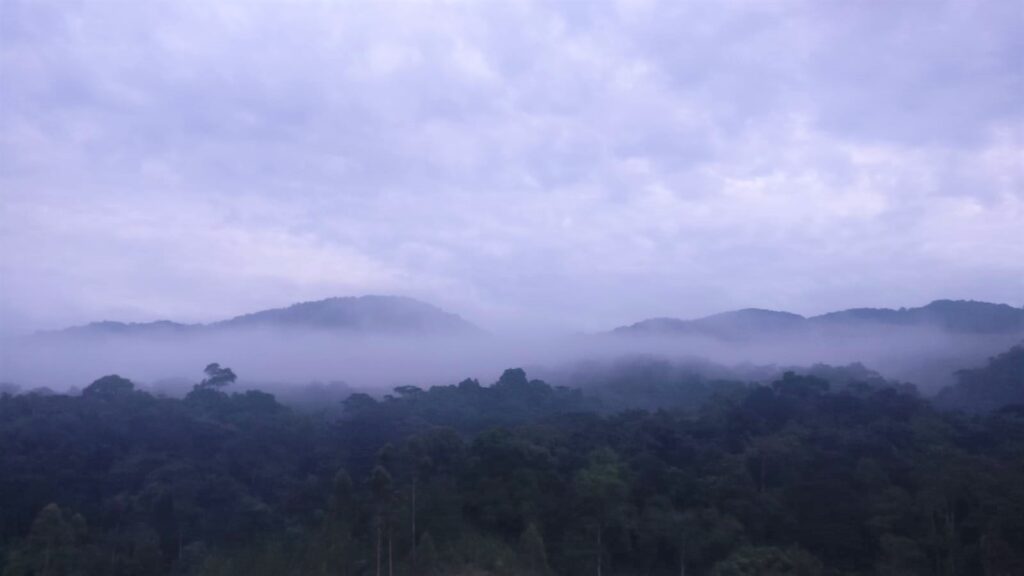
Bwindi Impenetrable Forest National Park (also called “The Place of Darkness” due to its dense treetops) is an ancient, montane and lowland forest spanning 332 square kms (ONLY). The region is a UNESCO Heritage site, thanks to its incredible biodiversity and the large number of endangered species which can be found here. However, the human – wild conflict rages on. Lets take a pause and appreciate 332 square km. It is just a small area of 30 km by 10 km – that’s it. I may take you on a diversion – take a closer look at the Google satellite image below.
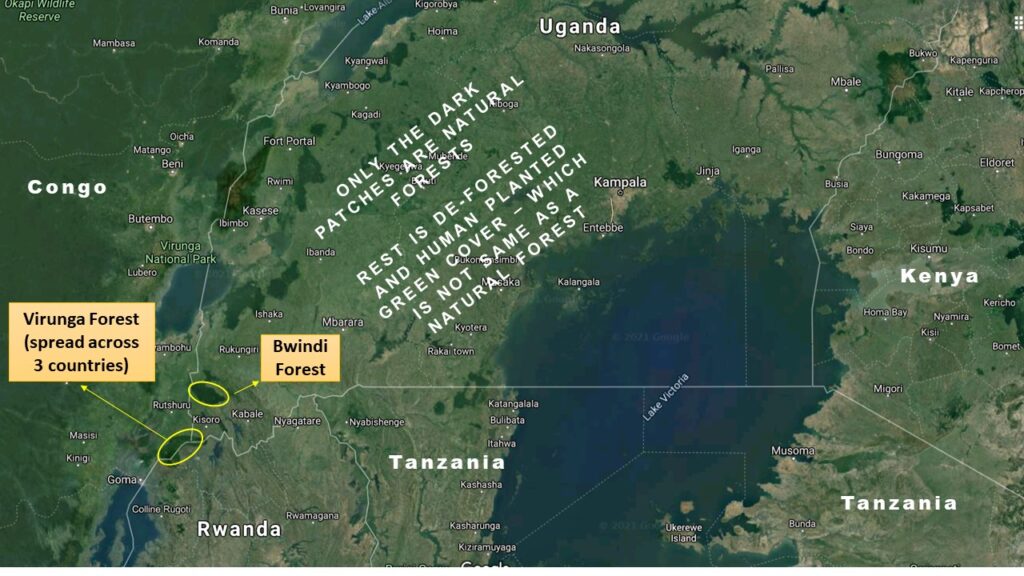
Back to Bweza’s family. There were 10 members in his family. There were three females, three younger adult males and three toddlers. Bweza himself is about 13 years old.
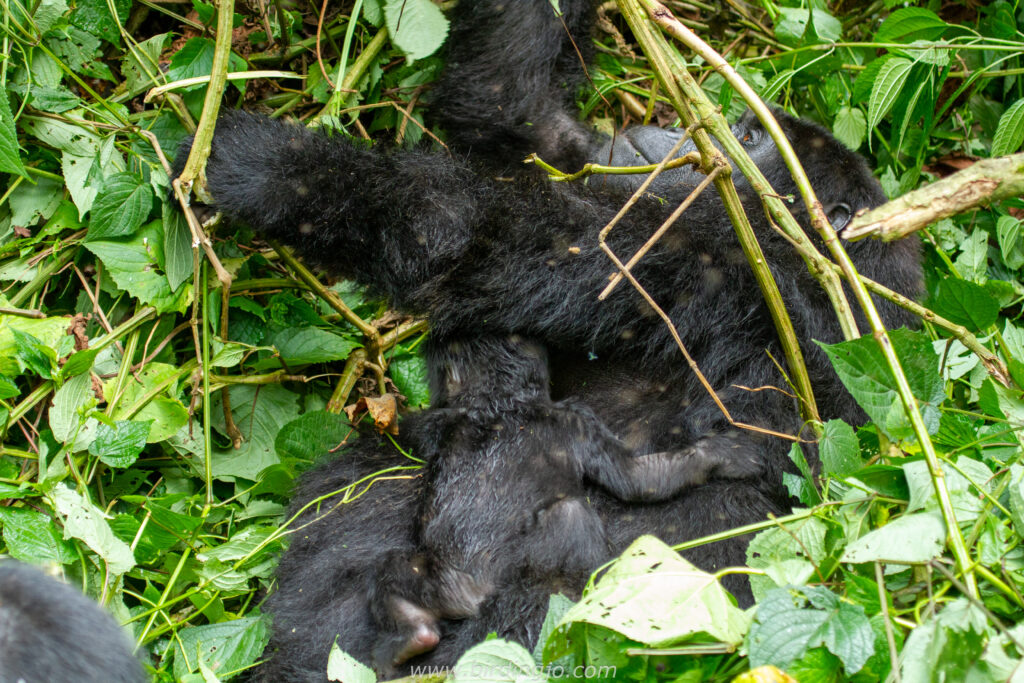
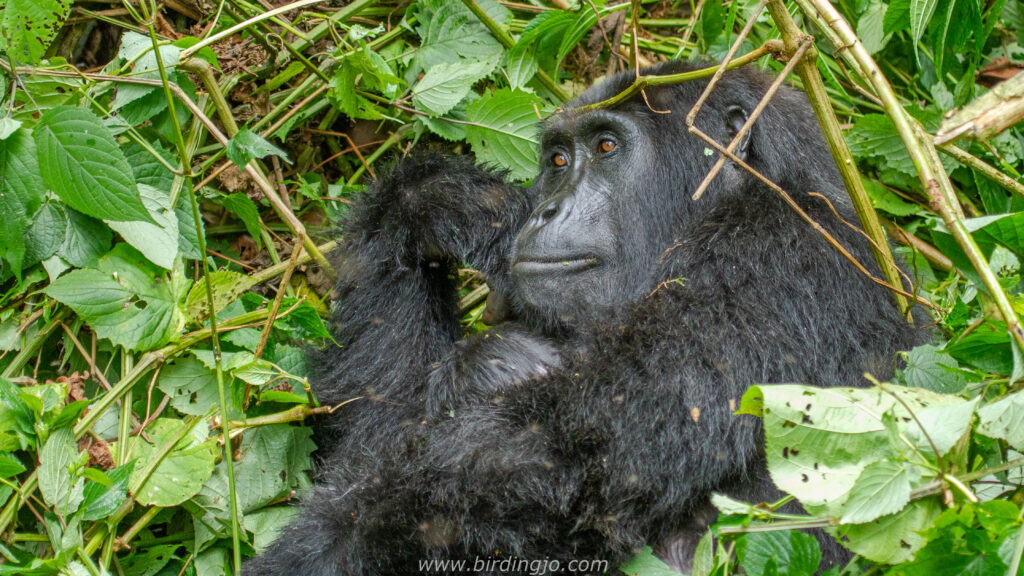
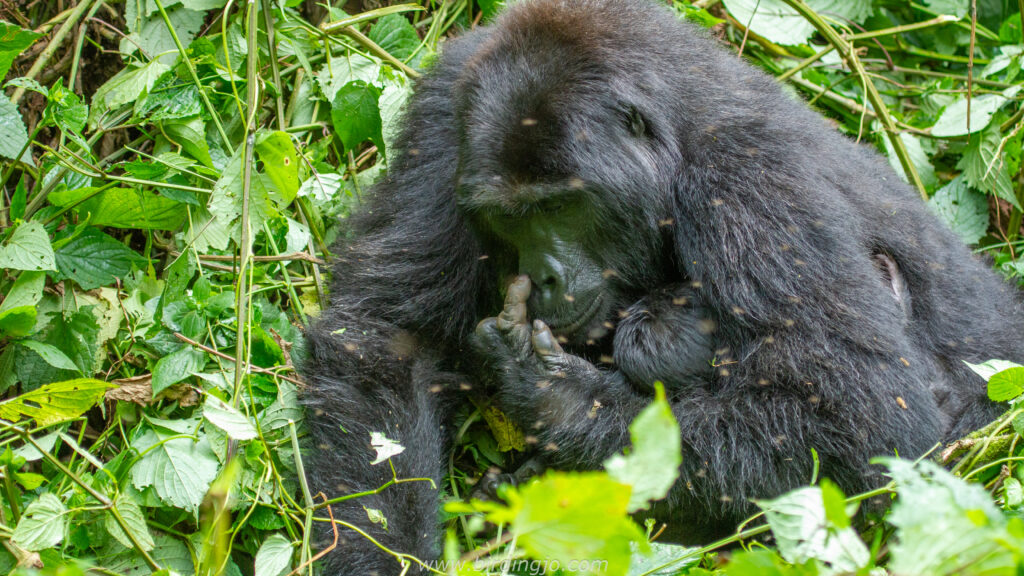
The nose reminds me of another interesting fact – Gorillas can be identified by nose prints, which are unique to each individual
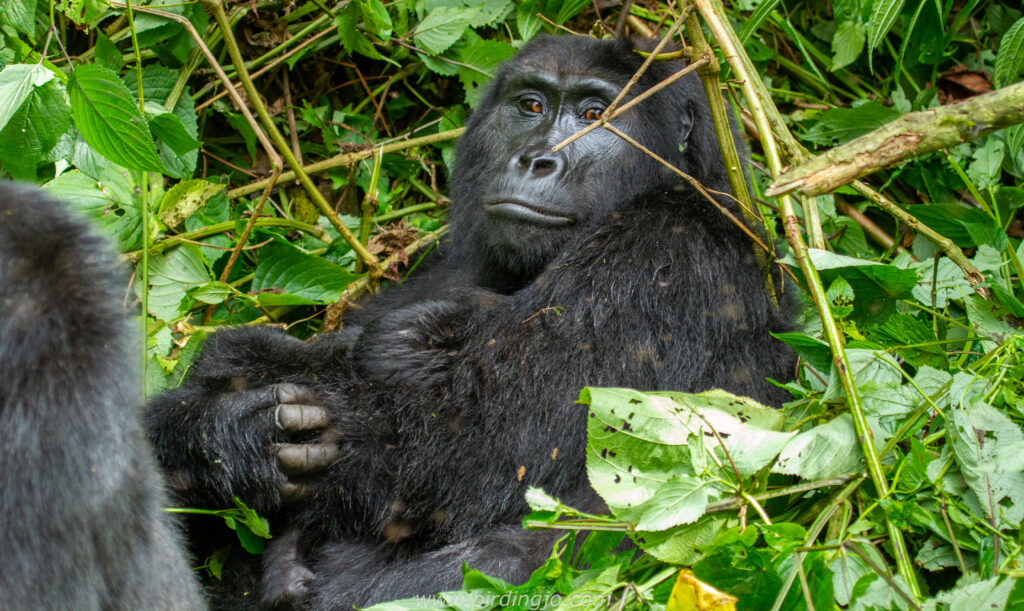
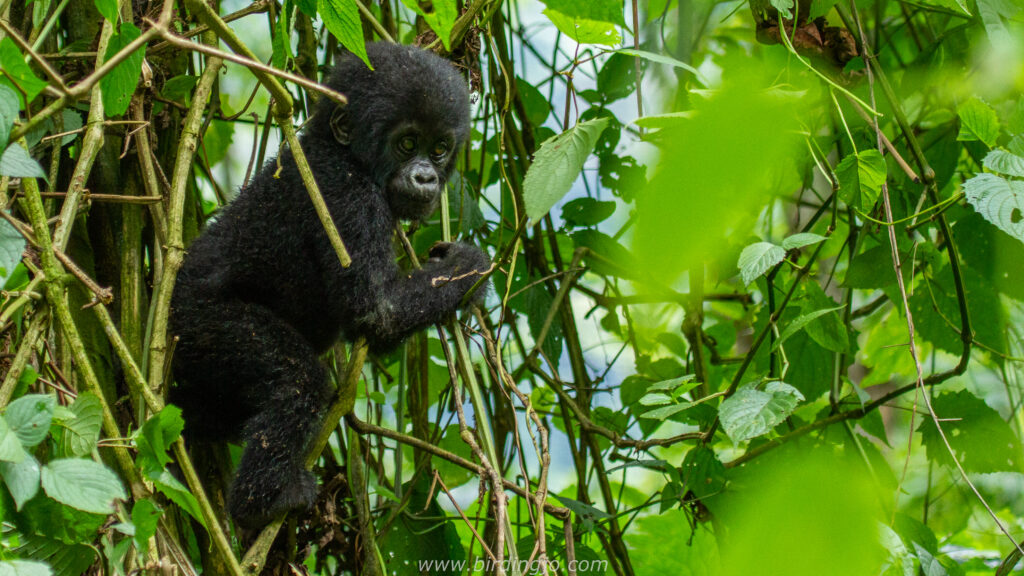
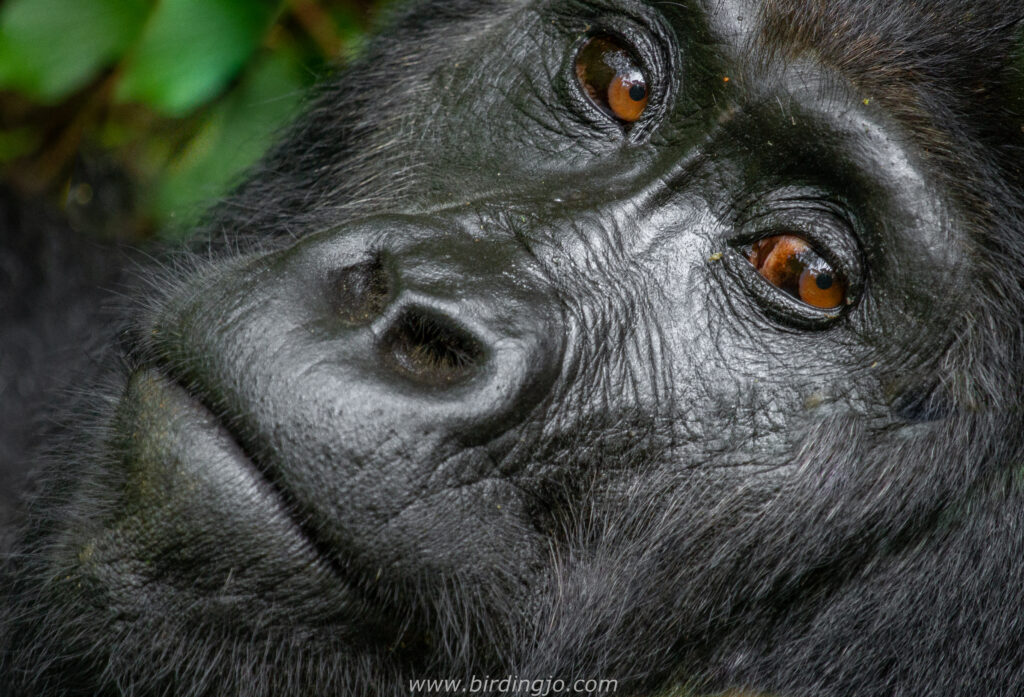
I think, we are.
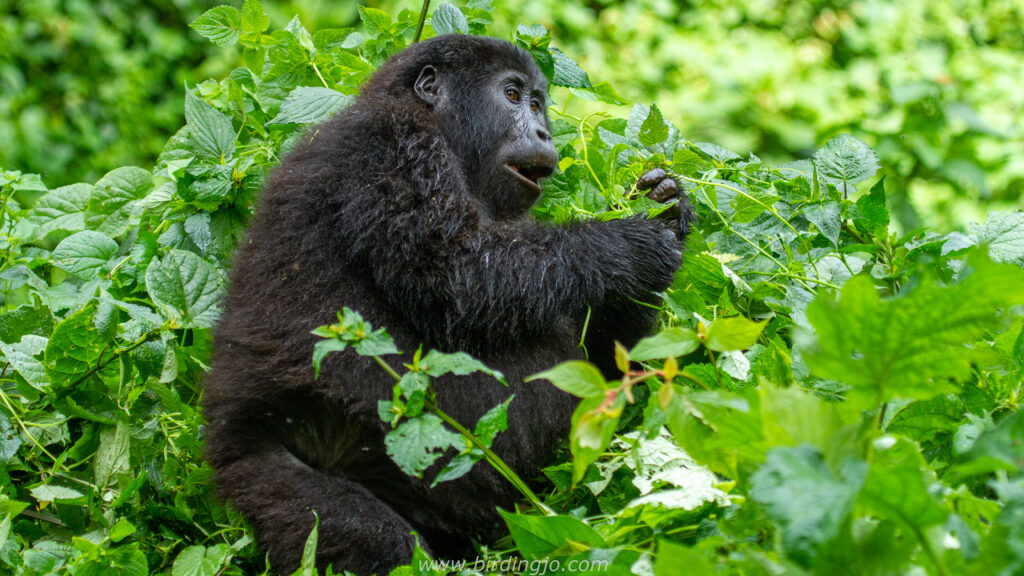
A word about the taxonomy of mountain gorillas. It was not until 1967 that the taxonomist Colin Groves proposed that all gorillas be regarded as one species (Gorilla gorilla) with three subspecies Gorilla gorilla gorilla (western lowland gorilla), Gorilla gorilla graueri (lowland gorillas found west of the Virungas) and Gorilla gorilla beringei (mountain gorillas, including Gorilla beringei, found in the Virungas and Bwindi). In 2003, after a review, they were divided into two species (Gorilla gorilla and Gorilla beringei) by The World Conservation Union (IUCN). Hence, the mountain gorillas are gorilla beringei. They have thicker hair cover to protect them from cold and incessant rains in their habitat.
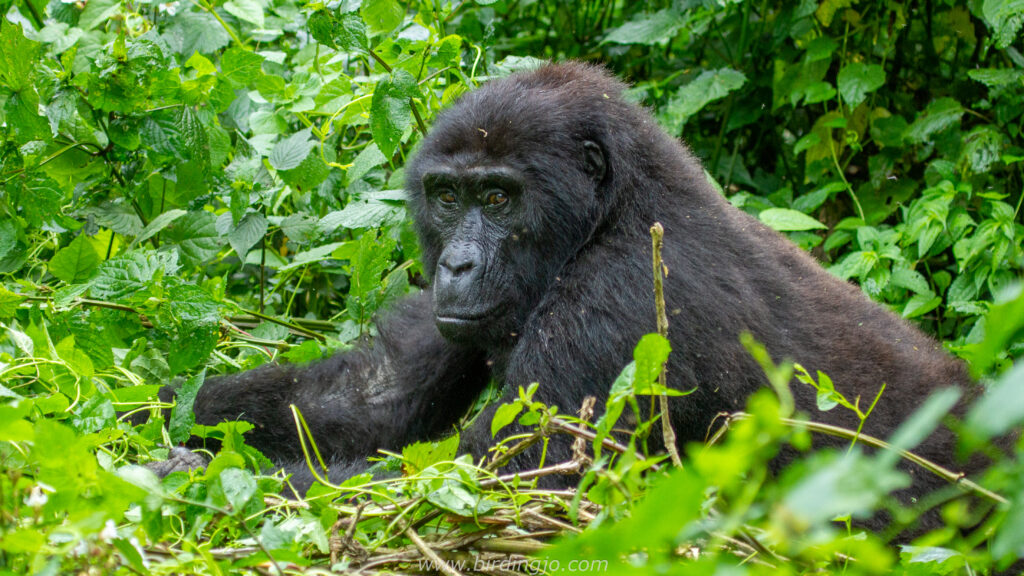
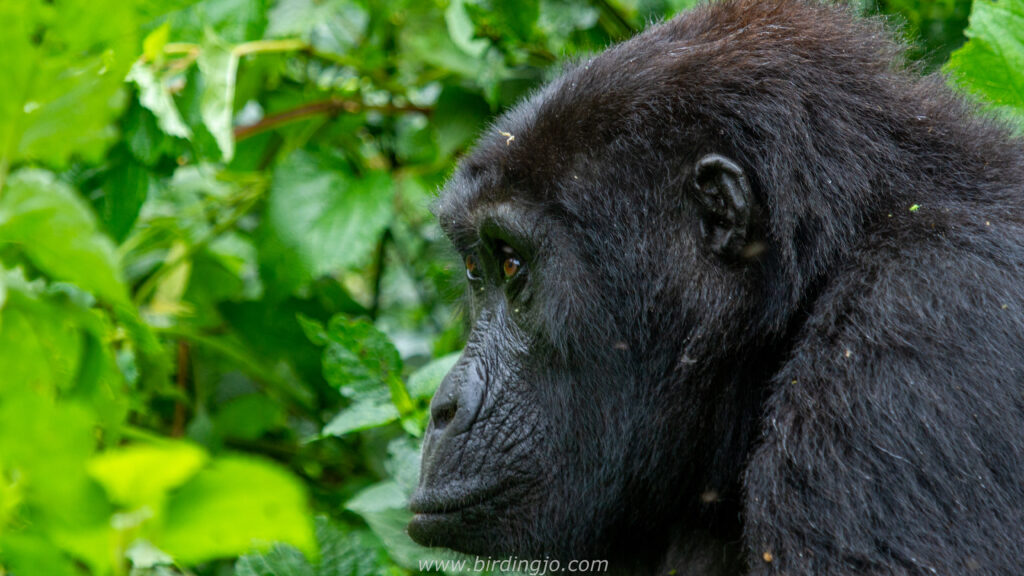
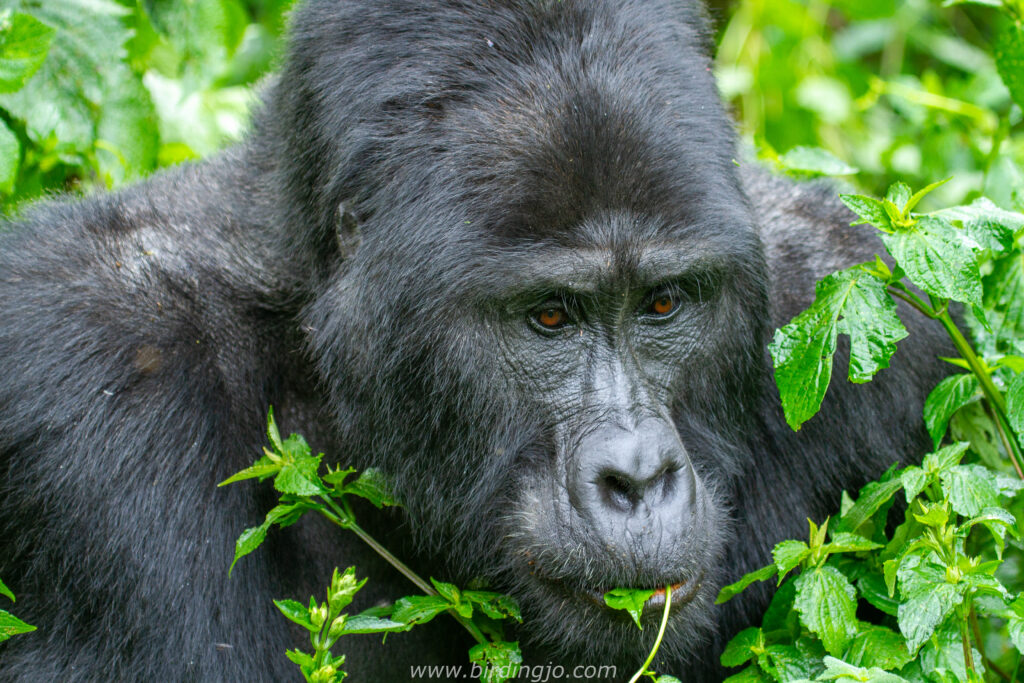
Now you know ‘where’ and ‘how’ to visit the mountain gorillas. The only question that remains to be answered / planned for is ‘When ?’. When are you visiting the King Kong and his family ?
Happy thinking !!
PS – Some important links to read up more on gorillas:-
https://en.wikipedia.org/wiki/Mountain_gorilla
https://www.nationalgeographic.com/adventure/article/reasons-trek-see-mountain-gorillas-uganda
https://en.unesco.org/courier/news-views-online/uganda-mountain-gorillas-shielded-threats
Insightful writeup n great clicks….Carry on Sudan…
Sir, thank you for stopping by and the encouragement like always. Cheers.
Sir
You transported us to Bwindi.
Excellent Portraits .
Wishing you many more such experiences.
Dear Vinit,
Glad that you liked it – am waiting for you to land in Entebbe and do some of these trips together.
Thank you for the appreciation.
Fantastic article dear. You are a Thorough Professional. Keep living your dream. Loved this one particularly…
Jassi Sir, your encouragement is the fuel. Over the years, you have bean appreciative and welcoming my sharing the pictures / stories of birding / wildlife.
Thank you for taking out time.
Fantastic sir .. envy your adventures
Thank you Nats. Would love you to join in – anyday.
As always. Splendid. It requires a combination of knowledge, skill and passion.
Dear Vasanta Sir,
Thank you for taking out time and stopping by.
Following you.
Excellent compilation and great detail of information. This is an adventure worth taking and to anyone still thinking hard on it, this writeup is all the inspiration you need to get your preparations started!
Dear Rema,
Thank you for the appreciation and helping in organizing the trip – it would not have been possible and fun without you.